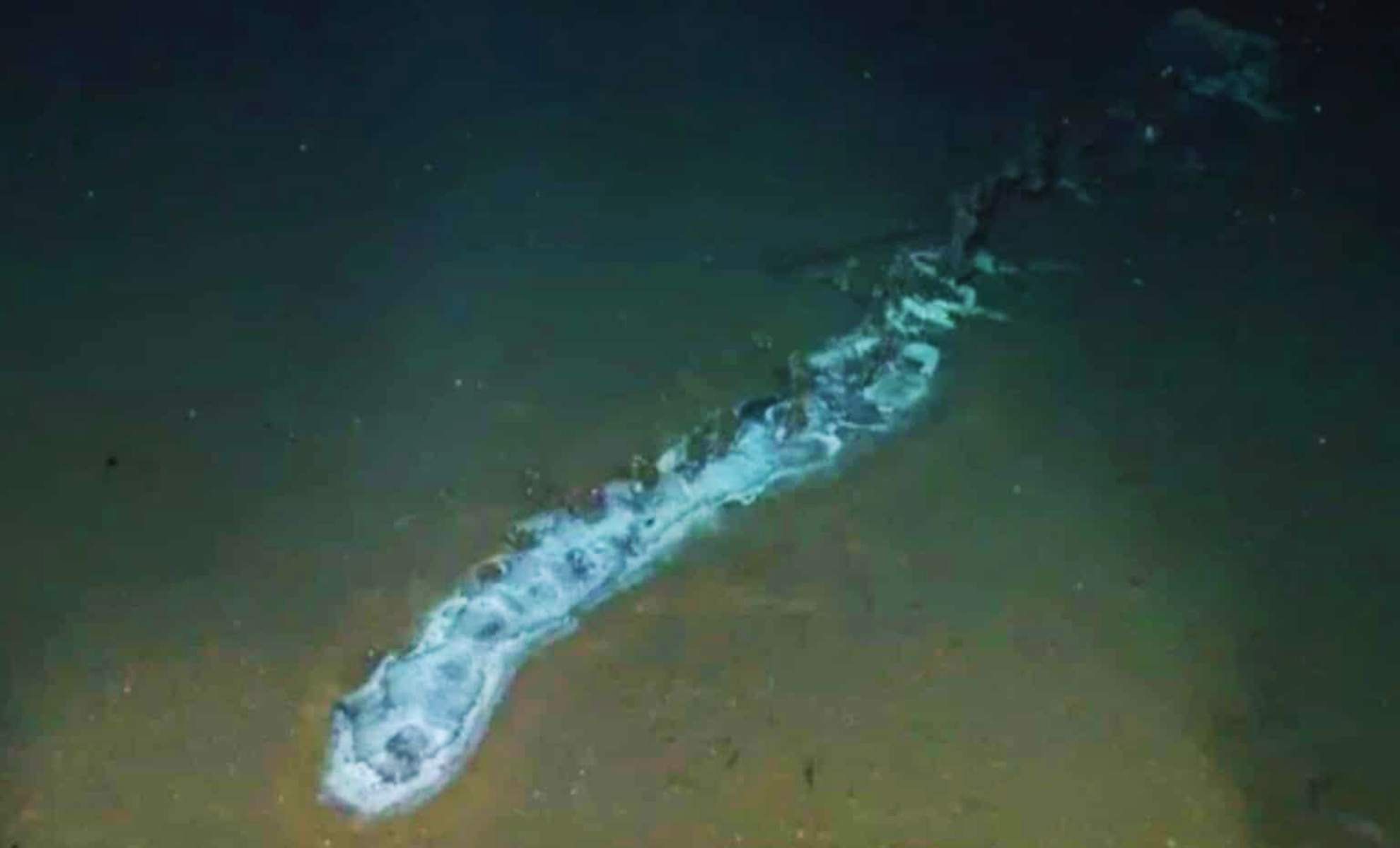In the darkest depths of the ocean, where sunlight never reaches and life seems improbable, scientists have discovered something extraordinary. A recent underwater expedition has revealed an entire ecosystem flourishing around the decaying remains of a massive sea creature. This rare phenomenon was captured on film during a 2021 deep-sea mission. Led by researchers from the Schmidt Ocean Institute, the footage unveils a secret world brimming with biodiversity.
Whale Falls: Nature’s Underwater Gift That Keeps Giving
Far from being lifeless graveyards, the seafloor becomes a hub of activity when a giant marine creature, such as a whale, meets its end and sinks to the abyss. This event, known as a whale fall, transforms the carcass into a long-lasting nutrient source that sustains a variety of life forms for decades. The process begins when scavengers like hagfish, deep-sea sharks, and crabs arrive to feed on the soft tissues. These predators are drawn by the rich organic matter, quickly devouring what they can in the early days of decomposition.
But the feast doesn’t end there. As the flesh is stripped away, microbial decomposers and specialized worms move in. Among the most fascinating of these are the Osedax worms, which are equipped with enzymes that allow them to bore into bones and extract lipids. These organisms signal the beginning of the second phase of decomposition, where the remaining skeleton becomes a refuge for more obscure life. Over time, this process creates a complex and shifting microhabitat in an otherwise barren and hostile environment.
A Three-Act Cycle of Life and Decay
Whale falls follow a well-documented ecological progression made up of three primary stages. The first, called the scavenger stage, attracts larger species that rely on soft tissue. These opportunistic feeders consume most of the available meat within months.
Once the flesh is gone, the ecosystem enters the decomposer stage, characterized by a bloom of bacterial colonies and bone-eating organisms. The Schmidt Ocean Institute documented this transformation in vivid detail during their 2021 expedition, revealing how entire species depend exclusively on the organic residue found in the bones of these fallen giants. As bacteria proliferate, they facilitate further breakdown of the tissues, while also supporting more complex food chains around the whale skeleton.
Finally, the remineralization stage begins. Here, the skeleton slowly releases vital nutrients into the surrounding sediment. These minerals attract bottom-dwelling invertebrates like shrimp, sea snails, and deep-sea corals, which feed on the leftover organic matter. This final stage can last decades, underscoring the long-term impact a single carcass can have on a remote ecosystem.
Life on the Edge: An Unlikely Sanctuary
What makes whale falls so remarkable is the sheer diversity of organisms they attract—many of which are either unknown, poorly understood, or completely dependent on this process for survival. In the nutrient-starved deep sea, whale falls act like biological islands, allowing species that would otherwise never encounter each other to coexist. They function not only as feeding grounds but also as nurseries, offering shelter and resources that support breeding populations.
Some species have adapted to rely entirely on whale falls for their life cycle. Deep-sea gastropods, certain species of shrimp, and even corals have been observed clustering around these bone beds. These pockets of life are an evolutionary marvel, showcasing how nature engineers complex systems even in the most desolate regions of the planet.
This perspective reshapes how scientists view deep-sea biodiversity. Whale falls serve as a living lab, helping researchers piece together interactions that would be impossible to observe otherwise. The slow pace of decomposition and the long-lasting nutrient flow provide a time-lapse of biological succession and survival strategies.
Signals From The Deep: What Whale Falls Reveal About Ocean Health
Beyond their ecological intrigue, whale falls offer valuable insights into the state of oceanic ecosystems. Because these events occur in hard-to-access regions, they offer a snapshot of marine health without the noise of human interference. Researchers can study how organic material circulates through deep-sea environments, and how nutrients travel up and down the water column.
One of the most promising areas of study is the carbon sequestration potential of whale falls. As these massive creatures decompose, they lock carbon into the seafloor in ways that may influence global carbon cycles. Studying these natural processes could provide new clues about the ocean’s role in mitigating climate change, offering another reason to protect marine environments from overfishing, pollution, and other human pressures.
As the Schmidt Ocean Institute has shown through its high-resolution documentation, each whale fall is more than an isolated event—it’s a vital cog in the planetary machine, hidden beneath the waves.
First Appeared on
Source link













